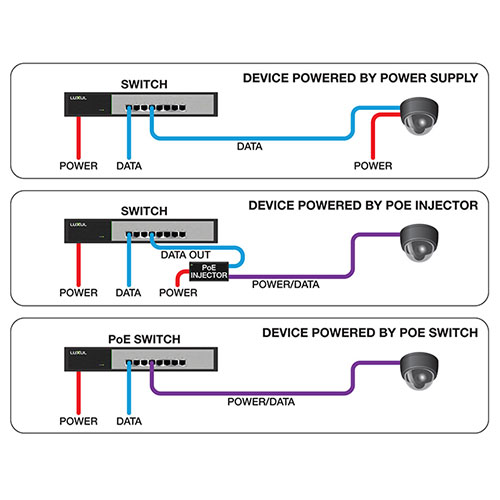Posted on 2/3/2018 by Luxul Team
By Kaesi Lee, technical support rep
Unless you’re a computer, it’s unlikely you can easily read binary. The number 11000000.10101000.00000000.00000001 probably doesn’t mean anything to you; in fact, you probably just scanned over it and didn’t actually read the number. You almost certainly didn't realize there was a letter slipped in there. And if you just went back to look at that number again, you owe us a share on this post. Compare that number to 192.168.0.1; it may look familiar to you if you’ve worked with networking, because it’s a commonly used IPv4 address.
What’s interesting is 192.168.0.1 and 11000000.10101000.00000000.00000001 are the same number! (You skipped over the numbers again, didn’t you?) The latter is simply written in binary, the language your computer communicates in.
The Anatomy of an IP Address
An IPv4 address is separated into four octets by periods. We refer to them as octets, because they’re sets of eight binary characters: 11000000.10101000.00000000.00000001. An IPv4 address is composed of 32 bits (4 octets x 8 binary characters = 32 bits).
How Am I Supposed to Read That?
I’ll teach you how to convert each octet into a number to make it easier for you to read, remember, and understand when working with networking devices.
So how does it work?
| 1 | 1 | 1 | 1 | 1 | 1 | 1 | 1 |
| 128 | 64 | 32 | 16 | 8 | 4 | 2 | 1 |
The chart above acts as a sort of conversion table. A one in the first place on the right means one; so 000000001 is one. A one in the second place from the left carries a value of two; so 00000011 is three! It’s counterintuitive for a human (we’re used to base 10 numbers), which illustrates perfectly why we use IPv4 addresses that look like 192.168.0.1 instead of typing out the slurry of zeros and ones you see above.
Here are some examples of popular IPv4 addresses to further illustrate how the conversion works:
| 8.8.8.8 | 00001000.00001000.00001000.00001000 |
| 10.0.0.1 | 00001010.00000000.00000000.00000001 |
| 192.168.1.254 | 11000000.10101000.00000001.11111110 |
How High Can Each Octet Go?
In a single octet, the highest number available is 11111111. What is this number? Well, if we reference the conversion table, we see we should add 1, 2, 4, 8, 16, 32, 64 and 128. The sum of these numbers is 255, which is why within a single IP address octet, the numbers can only go as high as 255. 256 would require an additional one, which would no longer be an octet, because it would have nine digits.
Each host on your network requires its own unique number. A portion of this IPv4 address, the final octet, is utilized as that identifying number. So this means on each network, you have the potential to assign 256 total unique numbers—0-255. So “0” is not a null value but rather an assignable number.
Why are IPv4 addresses important?
IPv4 addresses are important, because they are used to identify hosts and host locations on your network. They play a crucial role in connecting to your router and out to the Internet. Without an IPv4 address, your device could not access the Internet, because no other device would know where your device is located in the network!
P.S. Don't forget you owe us a share for skipping over our binary numbers ;)

 All News
All News
